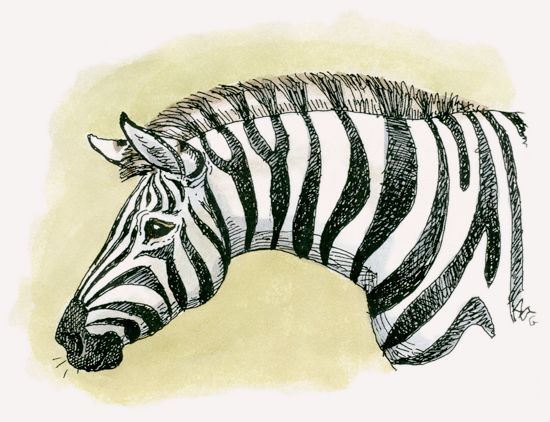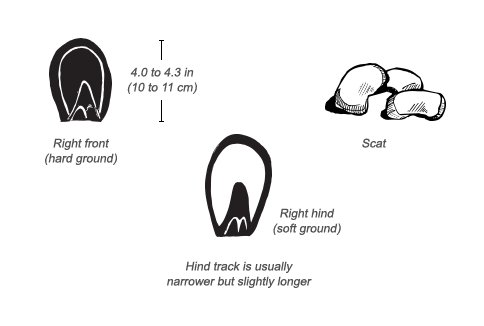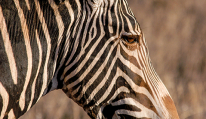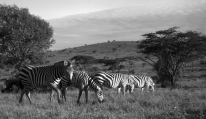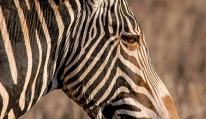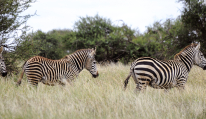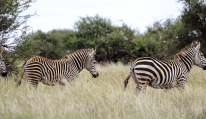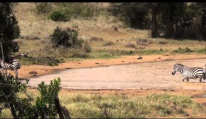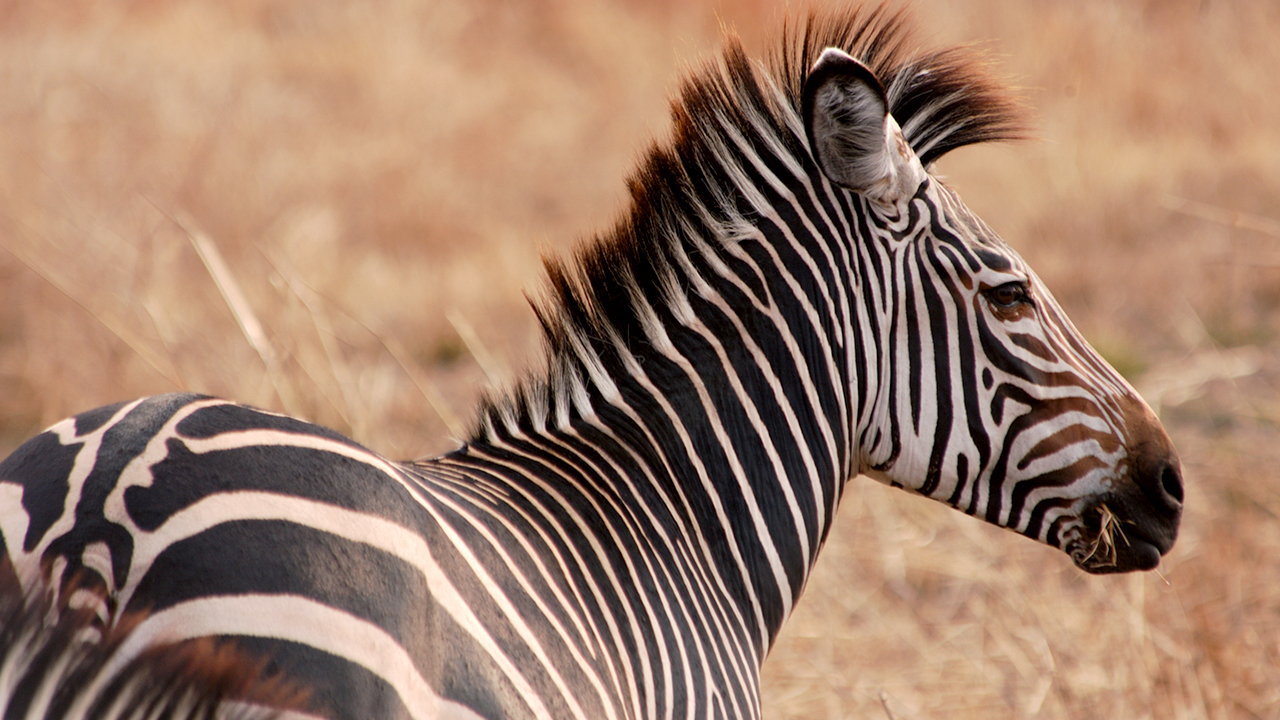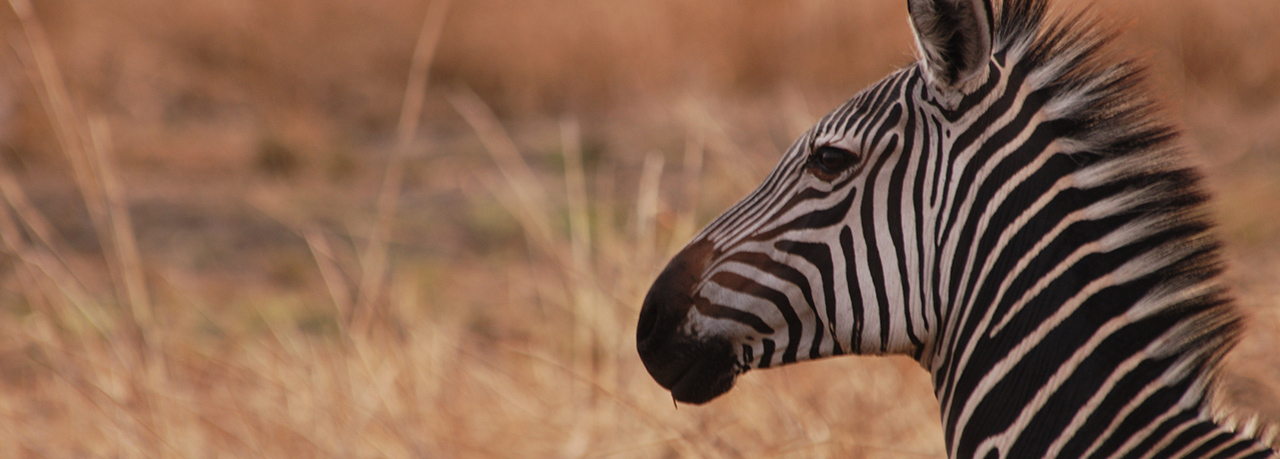Social Structure
Plains zebras are social animals. With the exception of some solitary stallions, plains zebras live either in family or stallion groups, although they will mingle with other groups. Family groups protect and care for all their individuals. They will even slow down for sick or injured animals or backtrack to bring a stray member back into the herd. Family groups, also called harems, include one stallion, one or a few mares, and the foals, yearlings, and two-year-old offspring of those mares. Once mares join a family group, they usually will stay with it their whole lives, though the original stallion may be replaced by a younger, stronger male. The stallion defends his harem, but when the family group is on the move, he brings up the rear; the lead goes to the highest-ranking female. Stallion groups consist of males that have not yet built their own harems.
Communication
While some scientists suggest that the zebra’s stripe pattern is nature’s way of confusing predators, it may allow zebras to recognize one another since each pattern is unique to a specific animal. When a foal is looking for its mother, it walks from group to group, touching noses with each individual until the foal finds its mother. Nose-to-nose contact is important for adults, too, as a form of greeting. It’s often followed by sniffing the rest of the body. Zebras communicate verbally by braying and by emitting two-syllable hee-haws (possibly as a warning) as well as squeaks and squeals to communicate fear or distress. They also snort and produce a barking sound that sounds like quagga quagga quagga.
Behavior
Plains zebras spend half of their waking hours grazing. The remainder of the day they are either on the move or resting. When at rest, one individual may stand guard. Certain behaviors help plains zebras bond with each other. One of the most important of these is skin nibbling between mothers and their young. These zebras also groom each other, and like to rub against trees or take dust baths while rolling on the ground. When plains zebras fight, they use a variety of techniques, including neck wrestling, biting, rearing up, and chasing.
Conservation
Plains zebras are a species of lower risk, with population numbers reaching nearly a million. They are well-protected in Kenya and Tanzania as well as other areas of their range. However, their heavy dependence on water makes them susceptible to droughts like the one that almost wiped out the population in northern Kenya in the 1970s. Fortunately, plains zebras are quite hardy and possess a high breeding rate that helps them bounce back from such natural disasters so long as they can find suitable habitat.

